Creating an inspiring and highly functional sewing room requires balancing light, storage, organization, and personalization. By harnessing natural illumination, incorporating tailored storage solutions, and utilizing versatile furnishings, you can transform any space—no matter how large or small—into a dedicated creative haven. From custom cabinets and open shelving to mobile carts and compact armoires, the key is to blend aesthetic appeal with practicality. Thoughtful additions such as pegboards, magnetic boards, and fabric bolt displays keep tools and materials within easy reach, while multi-functional islands and adjustable workstations allow for seamless transitions between cutting, sewing, and finishing tasks. Below are 20 detailed ideas to elevate your sewing space into both a stylish and efficient sanctuary.
1. Harnessing Natural Light
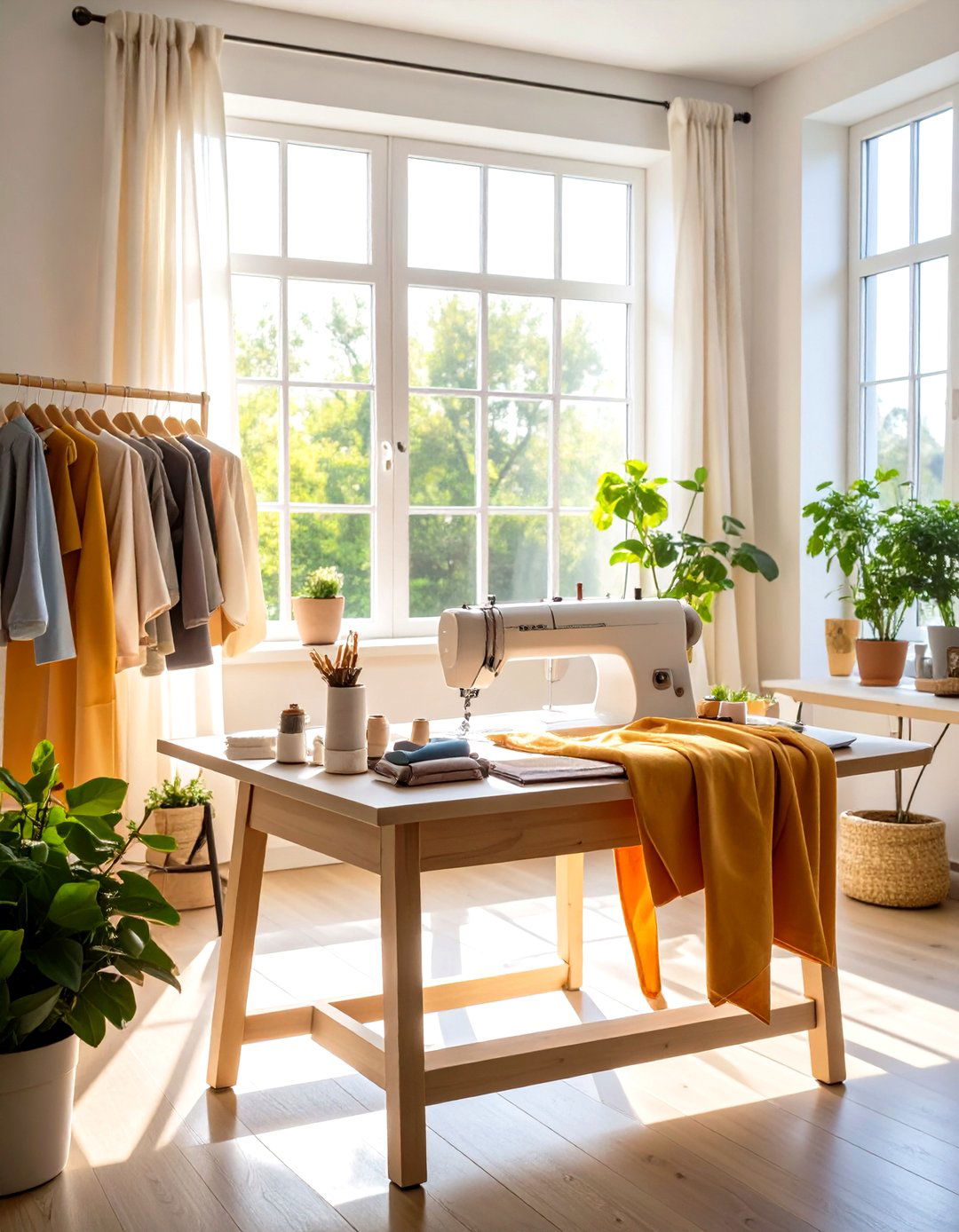
Position your sewing table near windows or under skylights to maximize daylight, reducing eye strain and enhancing color accuracy when choosing fabrics. Natural light also boosts mood and creativity—key for long sewing sessions. If windows are limited, consider installing a solar tube or using daylight-balanced LED fixtures to mimic natural illumination. Incorporating sheer curtains allows ample light while diffusing harsh sun rays, ensuring a comfortable workspace throughout the day.
2. Custom Storage Cabinets
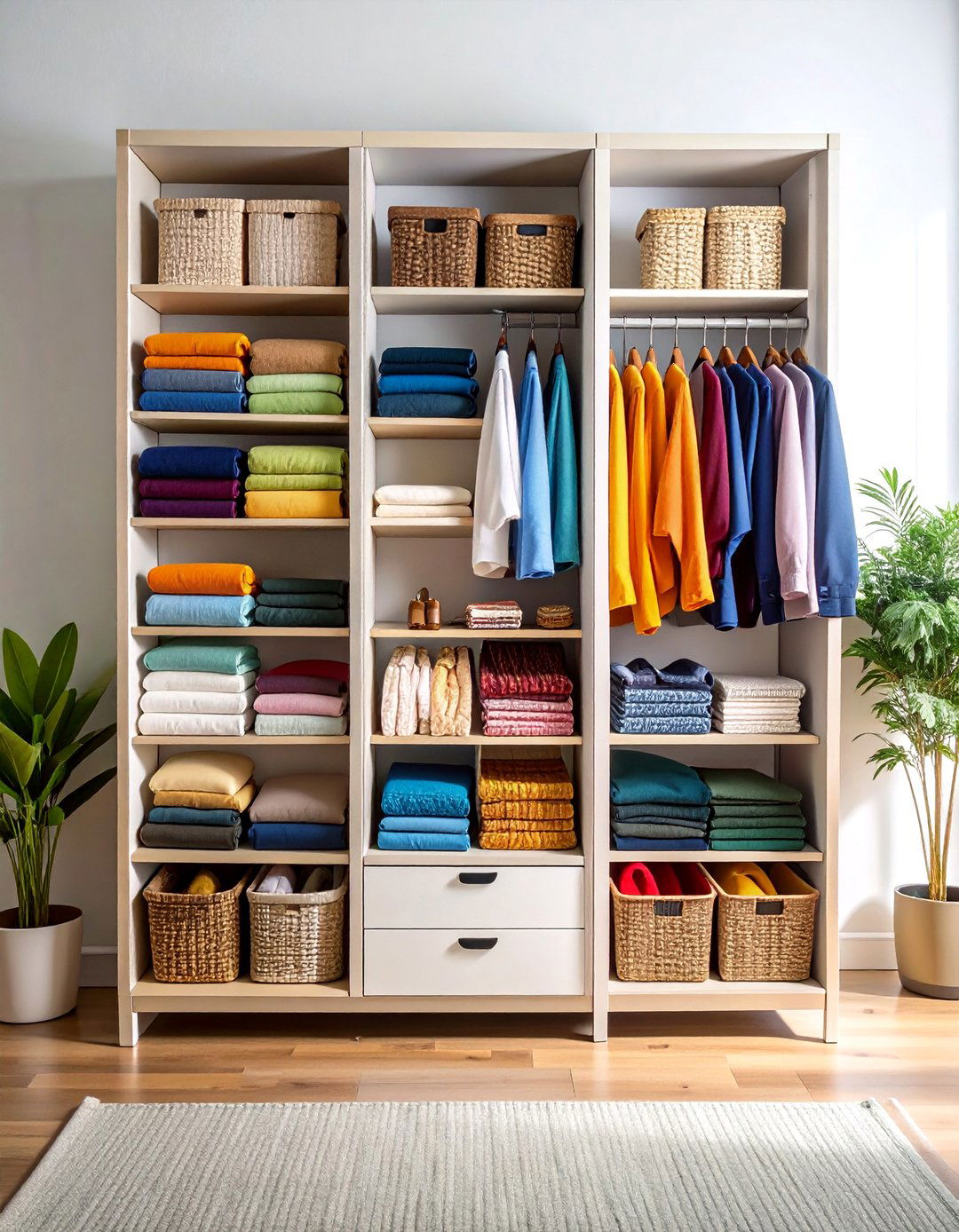
Floor-to-ceiling storage cabinets provide copious room for yardage, notions, and equipment without sacrificing floor space. Adjustable shelving accommodates different fabric heights, while built-in drawers keep smaller supplies like threads and needles organized. Glass-front doors showcase colorful collections, turning storage into a decorative feature. Opt for soft-close hinges and label each shelf to maintain order and ease of access.
3. Open Shelving Displays

Open shelving units offer quick visual inventory of fabrics and notions, encouraging you to use your entire stash. Display coordinating fabrics by color or project to spark inspiration. To keep shelves tidy, group items in baskets or clear bins; this prevents fabric slippage and makes retrieval simple. Floating shelves over your cutting table or sewing machine make efficient use of vertical space, keeping your tools within arm’s reach.
4. Rolling Carts for Mobility
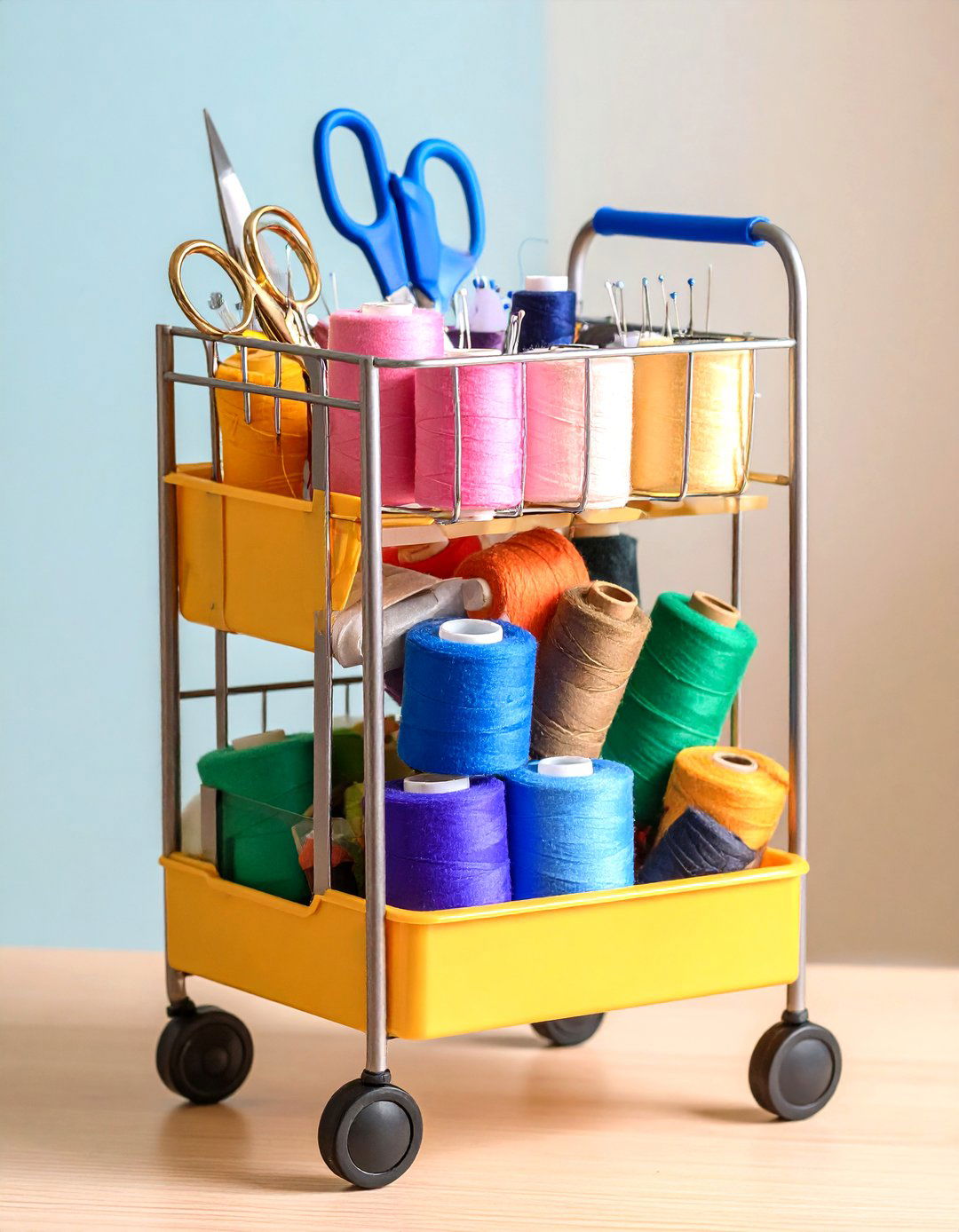
Mobile carts on casters allow you to move tools and supplies wherever you work in the room. Use a three-tier cart for threads, scissors, and rulers, and tuck it beside your sewing station. When not in use, slide the cart under a table or into a closet to free floor space. Look for carts with locking wheels to stabilize your mobile workstation when needed.
5. Multi-functional Islands

A central island serves as both a cutting table and an ironing station. Choose an island with cubby storage on one side for bolts of fabric and baskets of notions. An overhang on the opposite side creates a drop-leaf that can be raised for additional workspace. Islands also anchor the room’s layout, defining zones for different phases of your sewing process.
6. Pegboard Organization
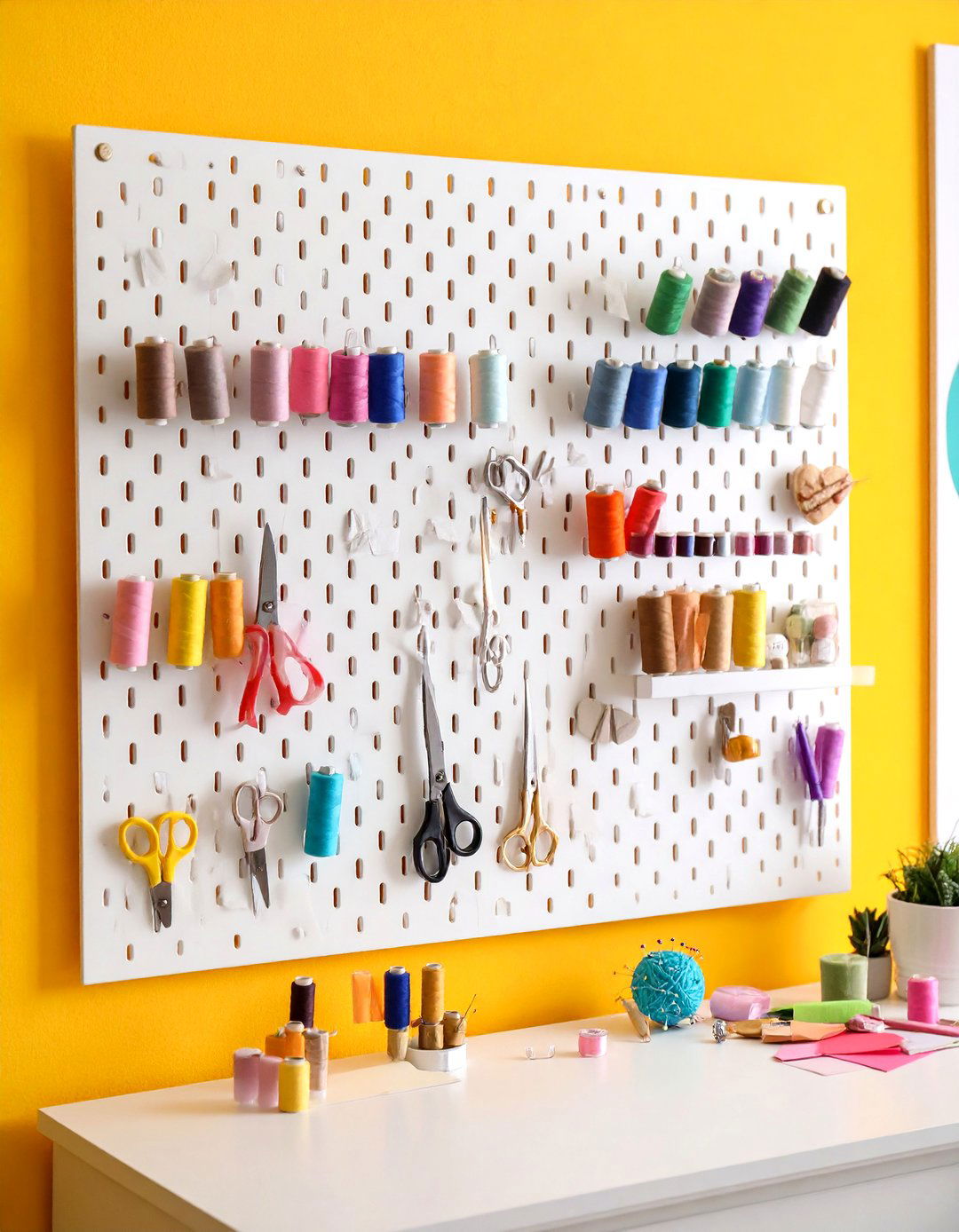
Pegboards transform blank wall space into a customizable tool display. Hang scissors, rulers, rotary cutters, and spools on hooks for instant visibility. Paint your pegboard in a coordinating hue to double as an accent wall. By shifting peg placements as your needs change, you maintain a flexible system that adapts over time.
7. Clear Storage Containers
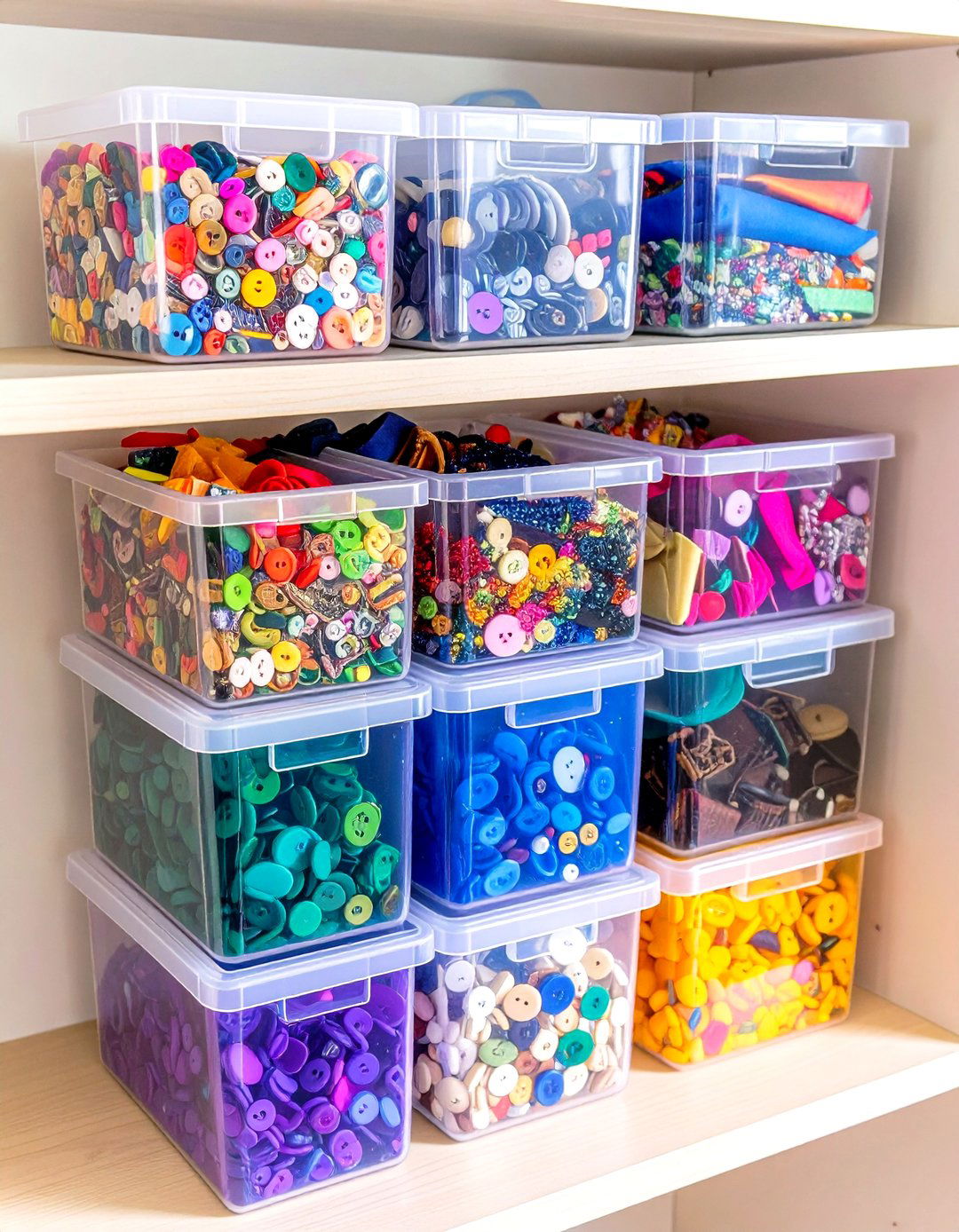
Stackable clear bins and jars make it easy to see contents without opening each container. Use matching containers for notions, buttons, and trims, and label each with vinyl or chalkboard stickers. For small scraps, repurpose glass jars to display colorful bits and keep them dust-free. Clear containers also contribute to a streamlined, cohesive aesthetic.
8. Magnetic Boards and Racks
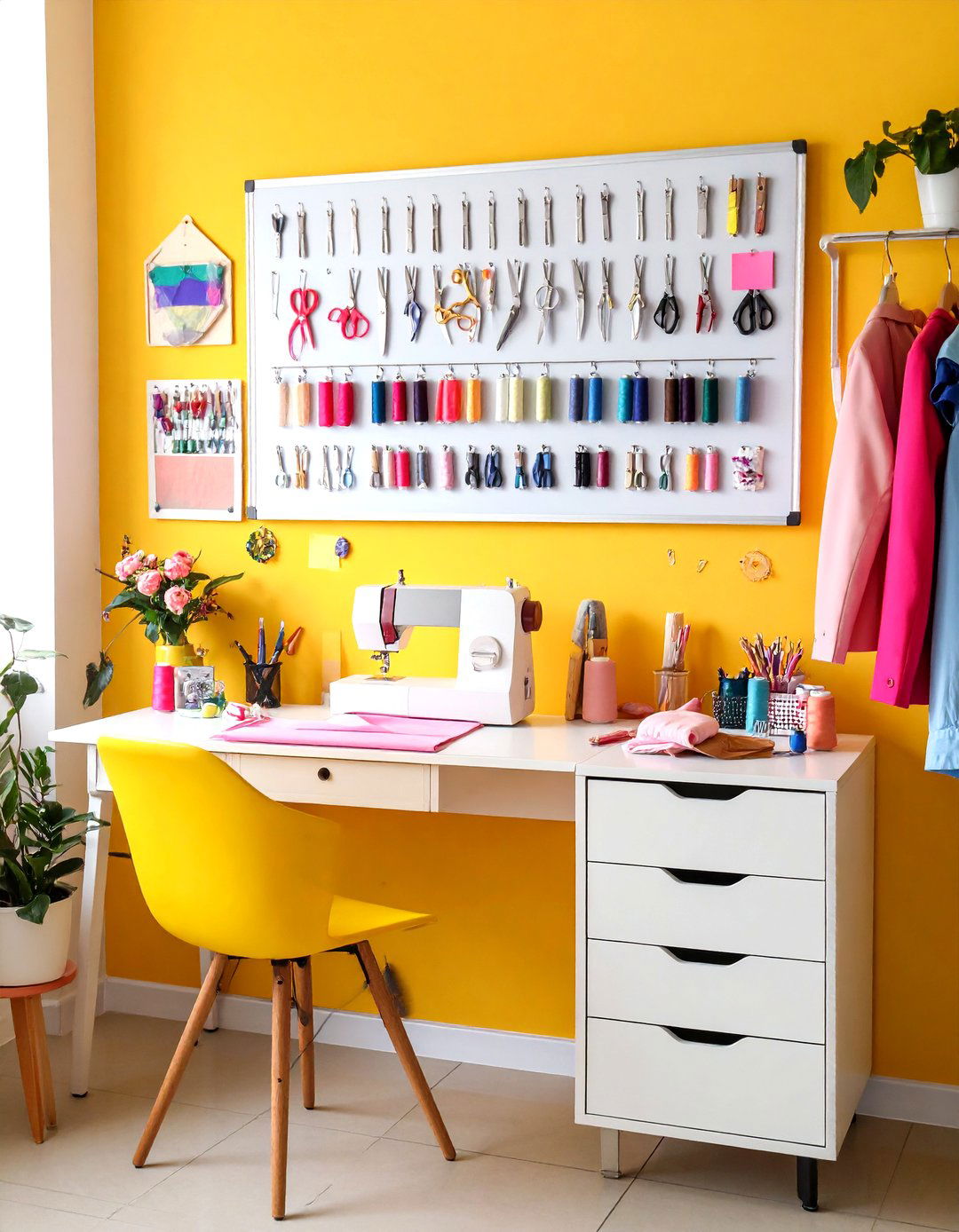
Magnetic boards offer a sleek solution for organizing pins, needles, and small metal tools. Mount a metal sheet framed in wood above your machine for holding scissors and seam rippers. Magnetic spice racks repurposed from the kitchen provide storage for spools of metallic thread or bobbins. This approach keeps your most-used items front and center.
9. Fabric Bolt Displays
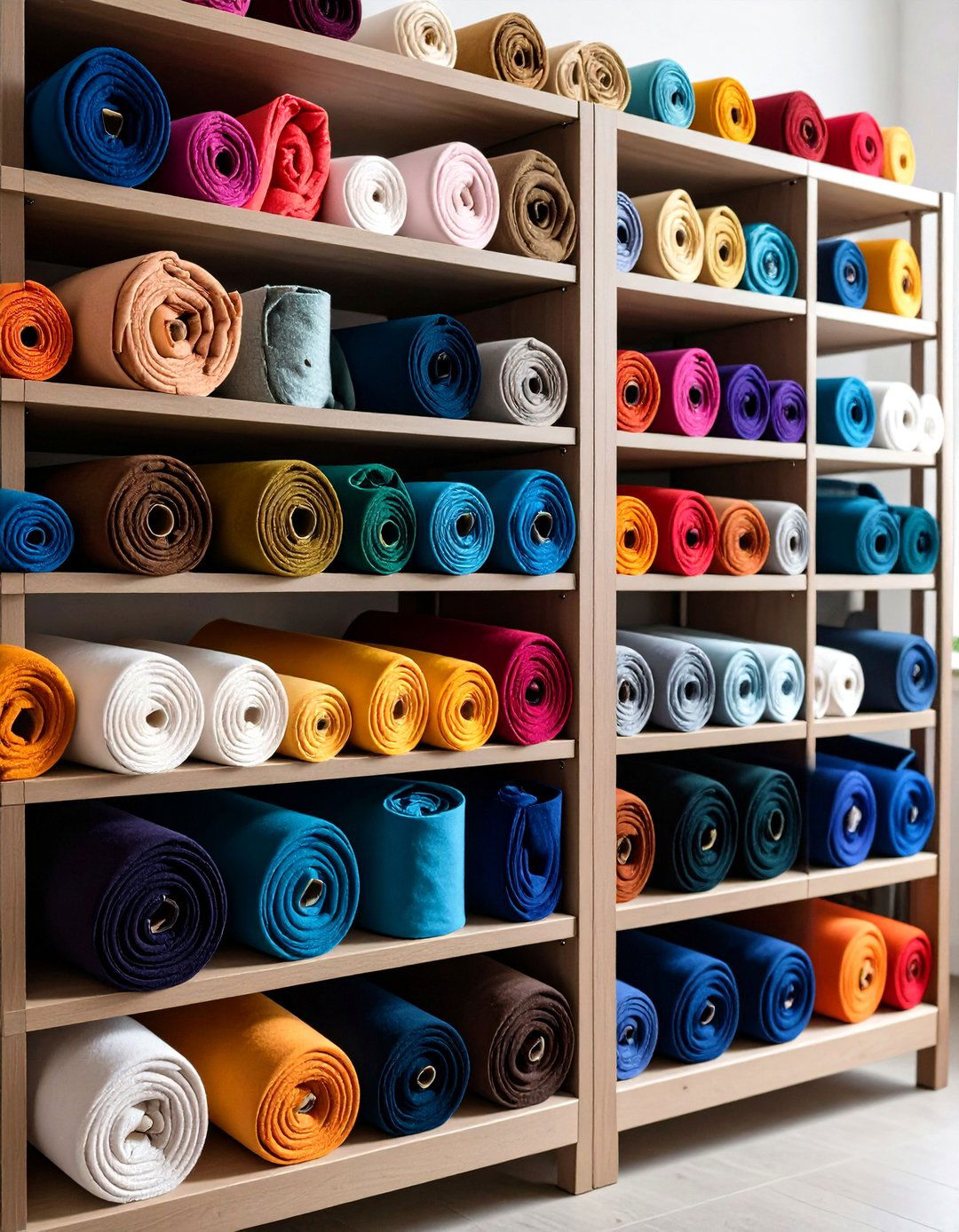
Showcase your favorite fabrics on a bolt rack or DIY dowel rod system. Displaying bolts vertically on a corner shelf or custom rack not only looks attractive but also lets you quickly flip through your selection. When not displaying, you can roll excess fabric and store it in labeled bins until needed.
10. Dedicated Cutting Stations
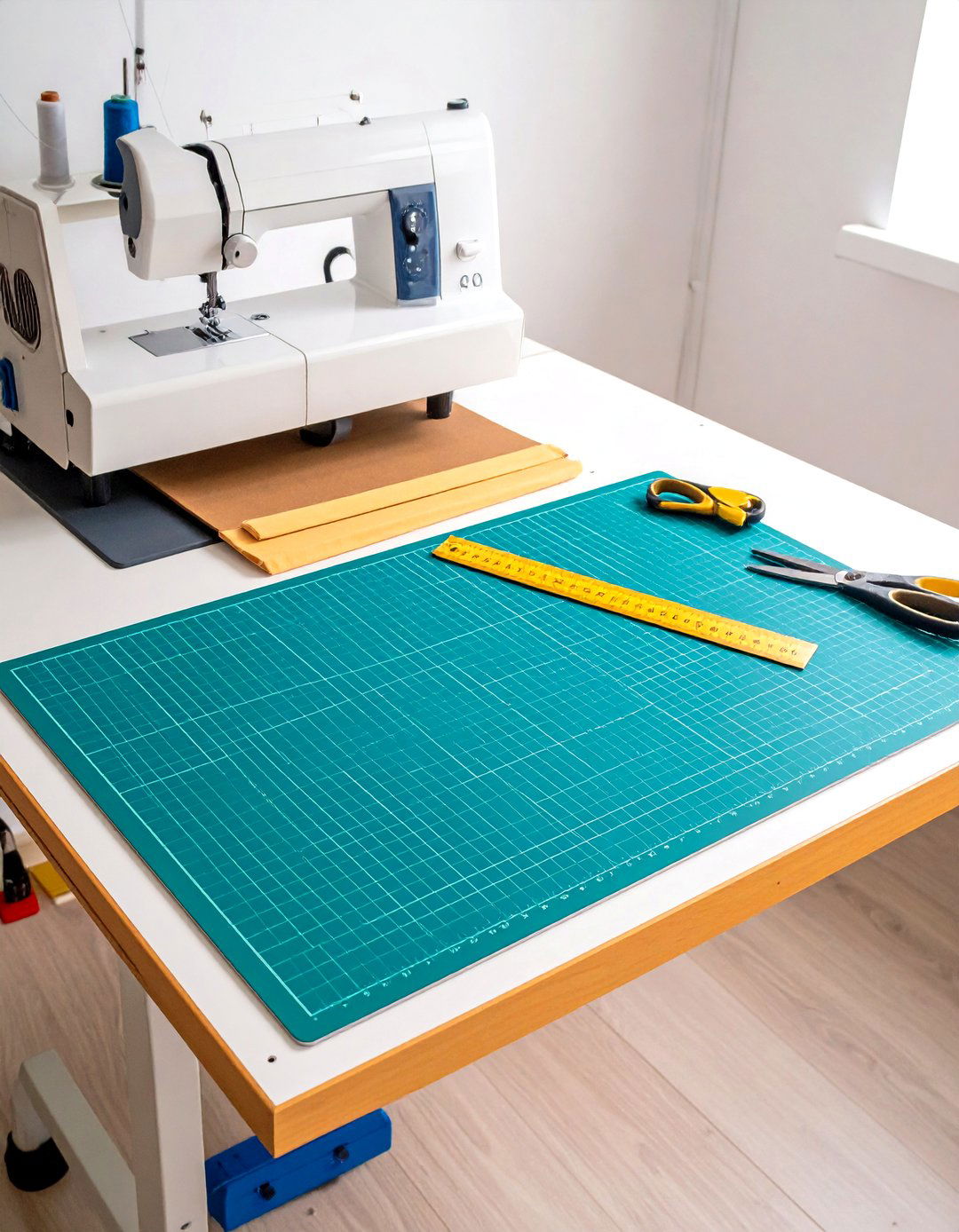
Reserve a specific counter or table for cutting, complete with a built-in ruler edge. A self-healing cutting mat anchored to the surface prevents slipping and protects the table. Beneath the cutting surface, install shallow drawers for rotary cutters, rulers, and pattern weights, keeping everything organized and accessible when measuring and cutting fabrics.
11. Inspirational Mood Boards
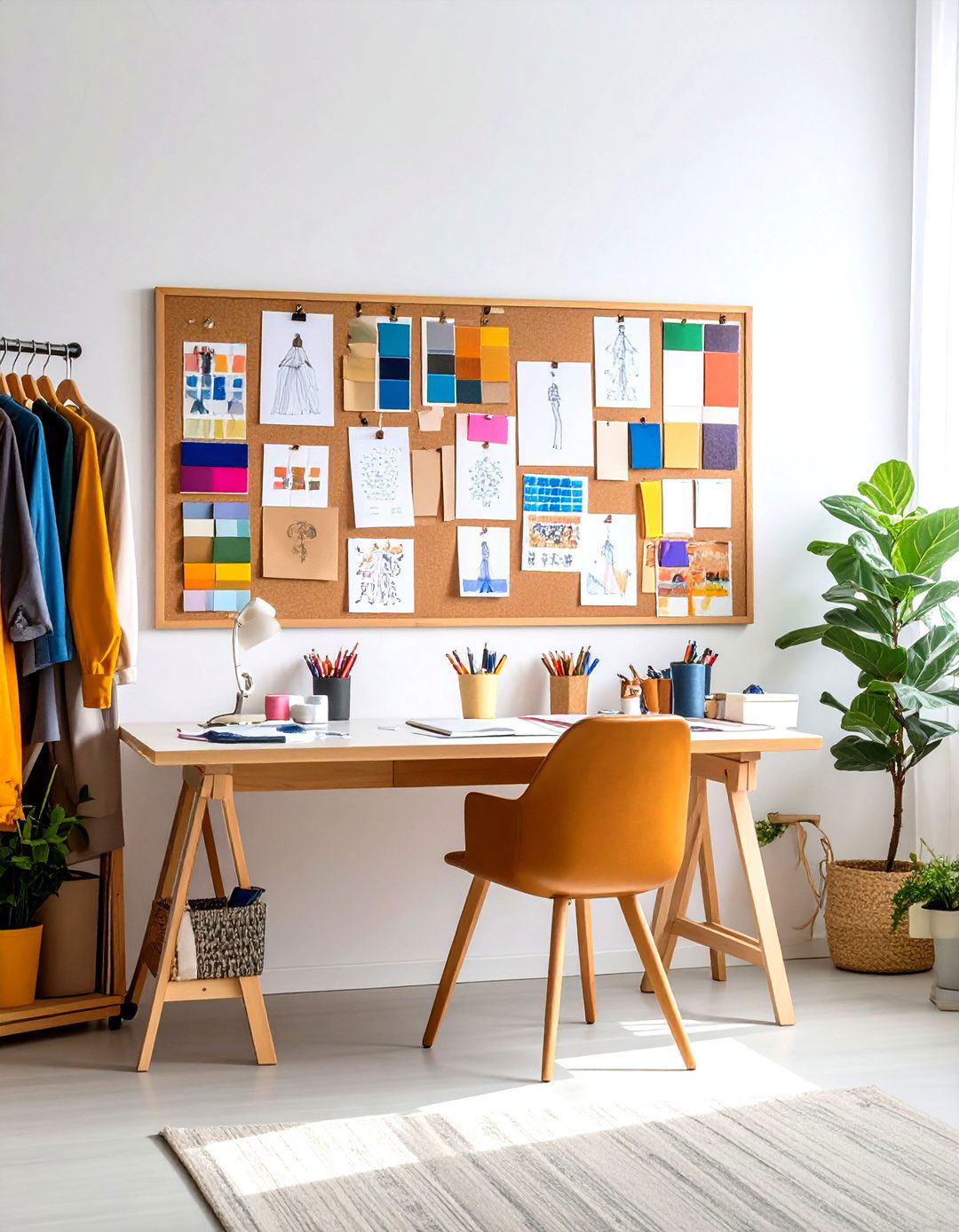
Hang a cork or felt board above your workspace to pin swatches, sketches, and project photos. A rotating display of patterns and color palettes keeps your creative juices flowing and helps visualize designs before you begin. Use decorative pushpins in coordinating colors for an extra touch of style.
12. Adjustable Workstations
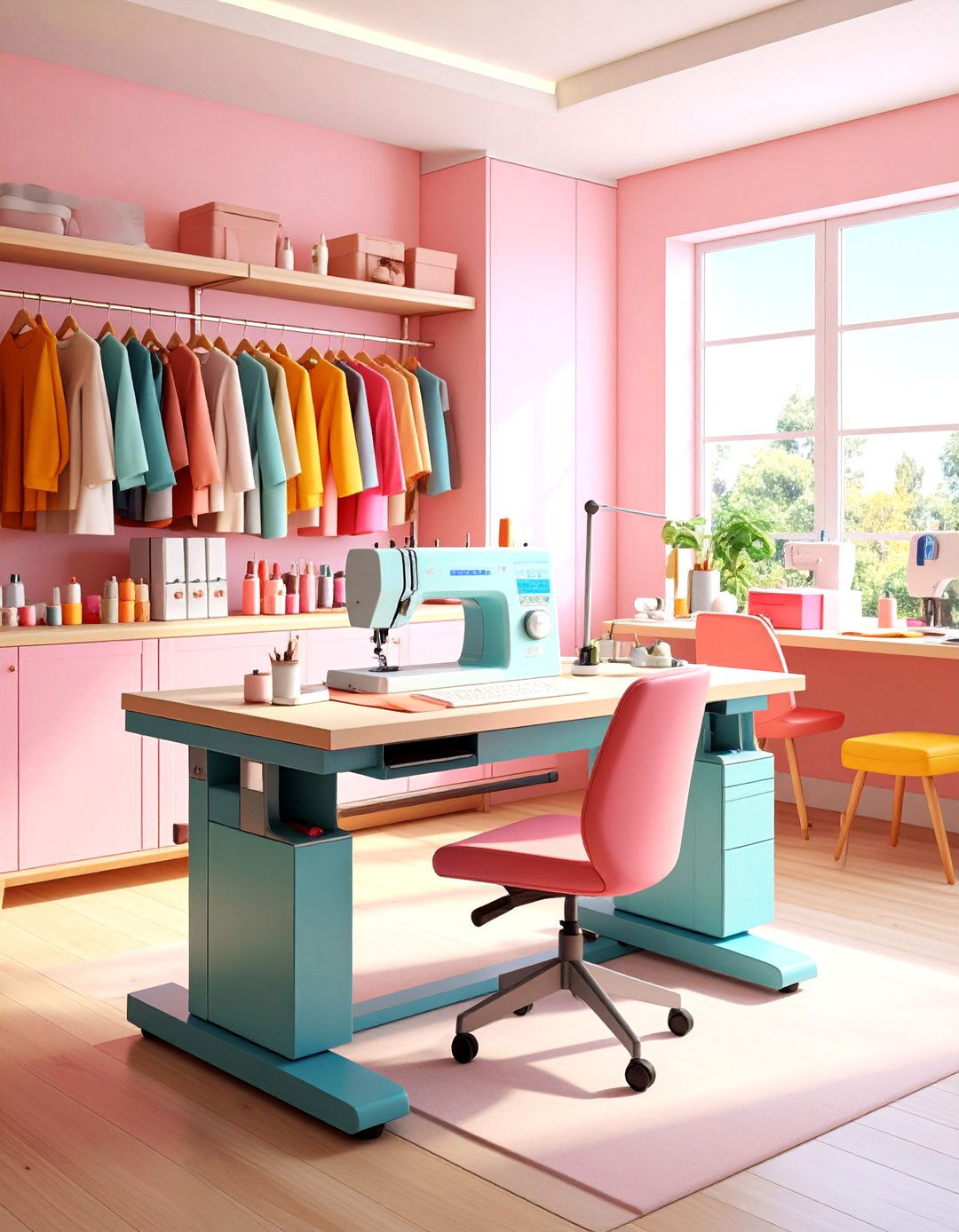
Height-adjustable tables allow you to switch between sitting and standing positions, reducing fatigue. Look for tables with electronic lifts or manual crank systems. When raised, the surface doubles as an ideal spot for pressing or trimming; lowered, it becomes a comfortable sewing height. This ergonomic flexibility is vital for long sessions.
13. Vertical Wall Storage
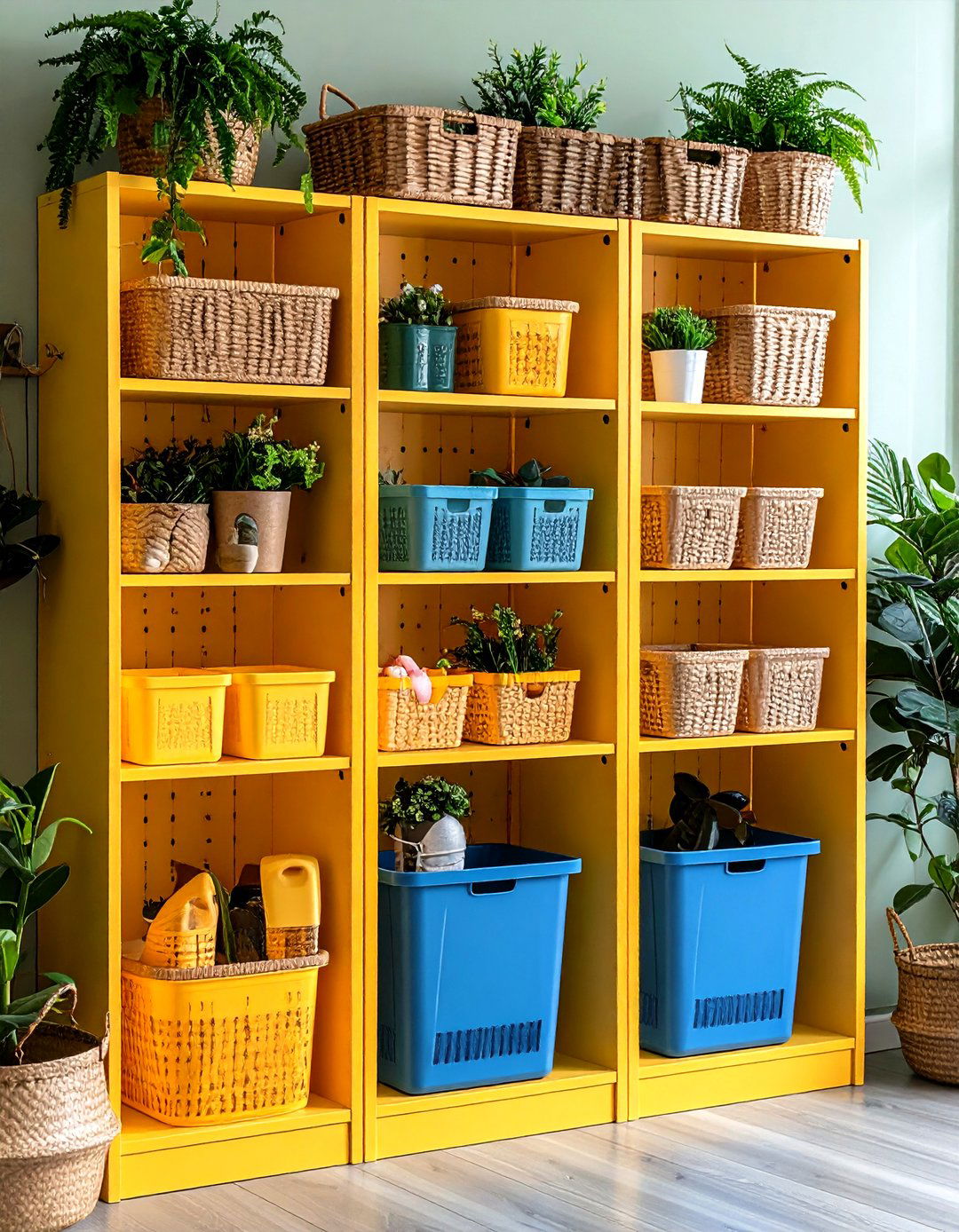
Install slatwall panels or grid walls to hang baskets, bins, and hooks. Frequently used items like fabric scissors, thread racks, and tape measures stay within reach yet off the counter. Baskets in various sizes hold rolled fabric, while small bins house notions. Modular panels let you reconfigure your layout as your collection grows.
14. Repurposed Furniture

Transform old dressers, hutches, or bookcases into sewing storage. Remove some drawers to create cubbies for bolts, and add rod brackets for hanging patterns. Paint or stain furniture to match your room’s palette. Upcycling pieces adds character and sustainability while providing ample organizational opportunities.
15. Compact Sewing Armoires
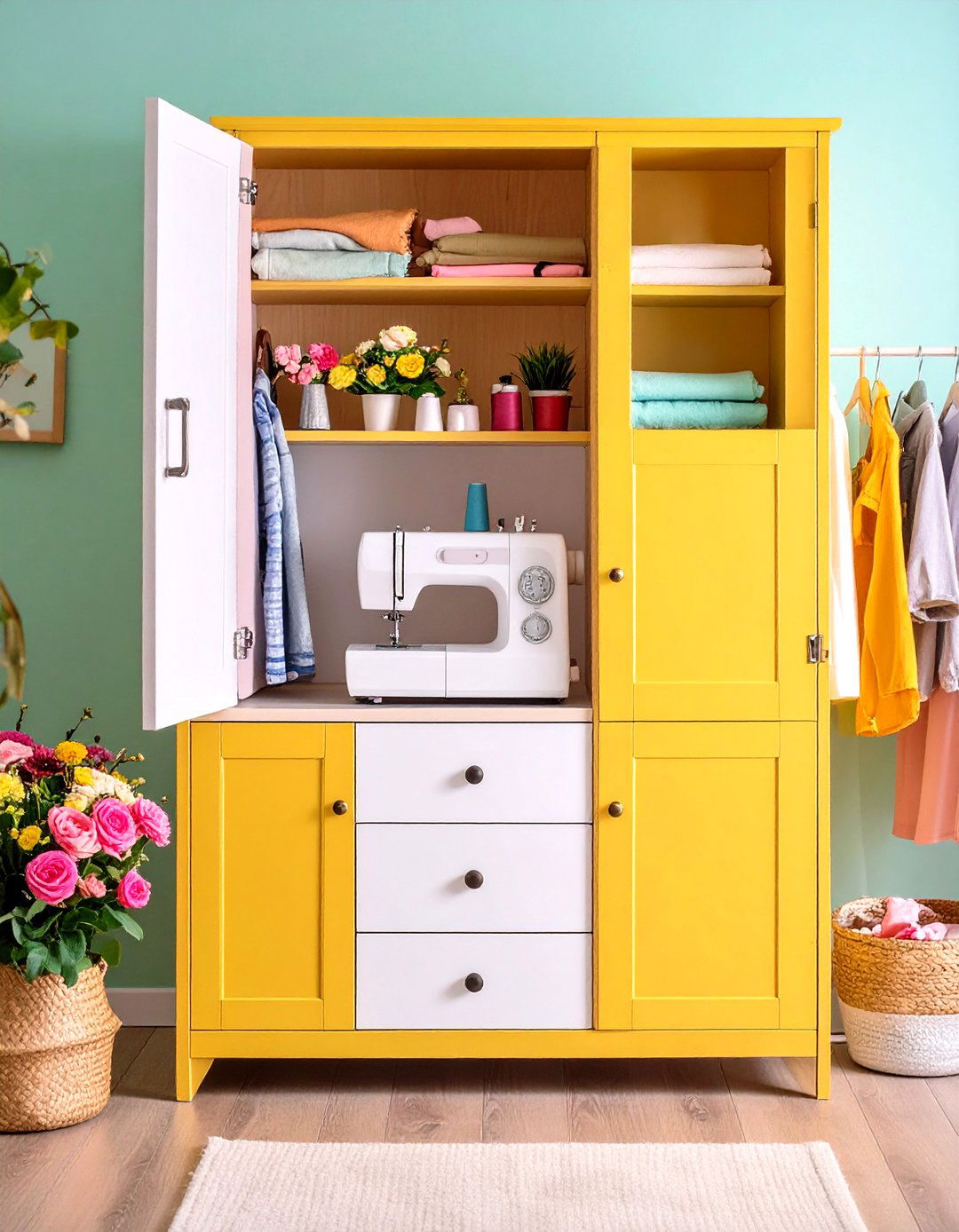
A sewing armoire conceals your machine behind closed doors, allowing the room to double as a guest space or office. When opened, the armoire provides a stable sewing surface and extra storage underneath. Look for models with built-in foot pedal cutouts and internal shelving tailored for thread and notions.
16. Portable Project Trays
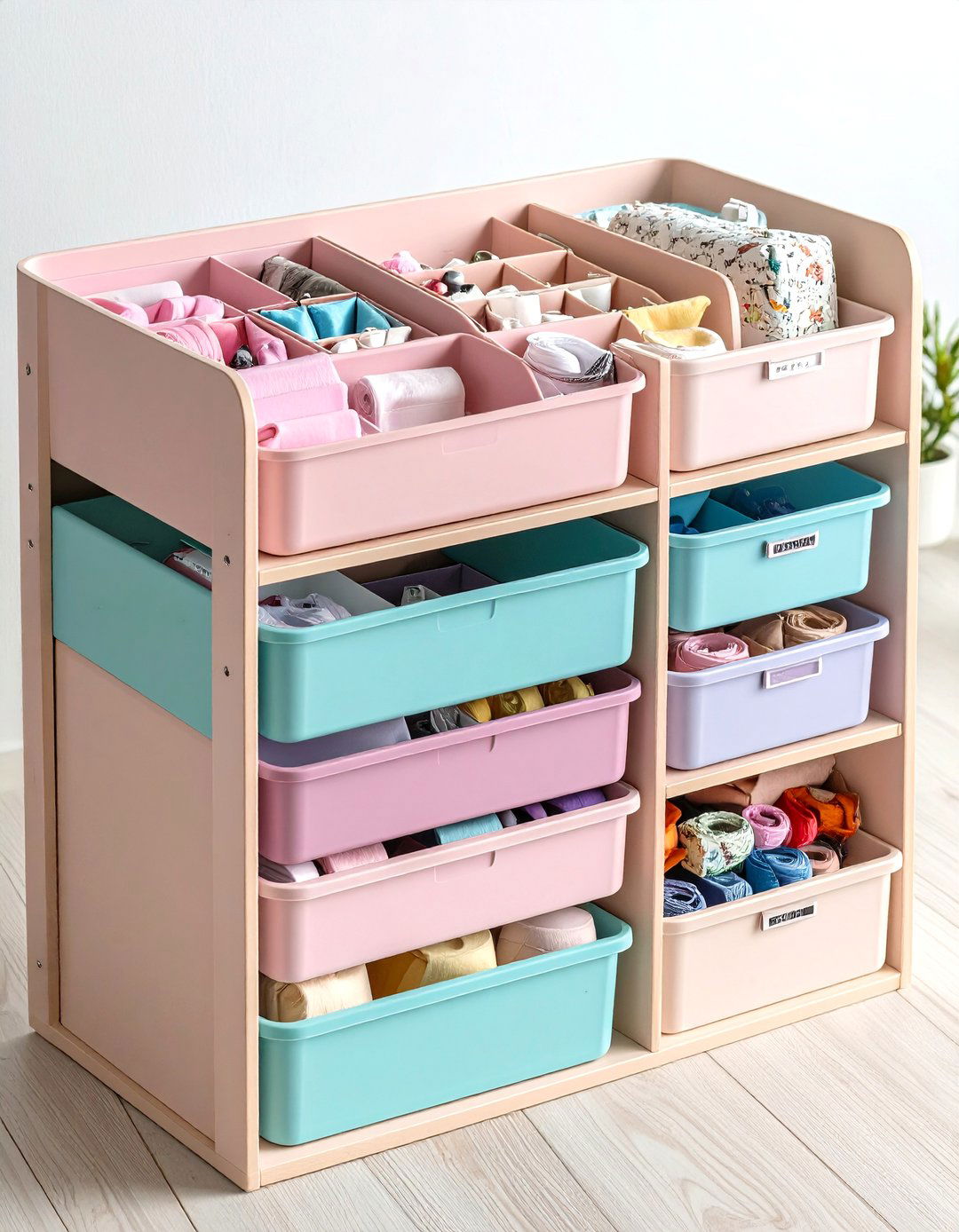
Shallow trays or rolling bins keep current projects contained and movable. Use stackable trays to separate cutting, sewing, and finishing stages. Roll your trays to a quiet corner or tuck them under a shelf when you need an uncluttered workspace. Assign each tray specific tasks to streamline your workflow.
17. Integrated Tech Stations
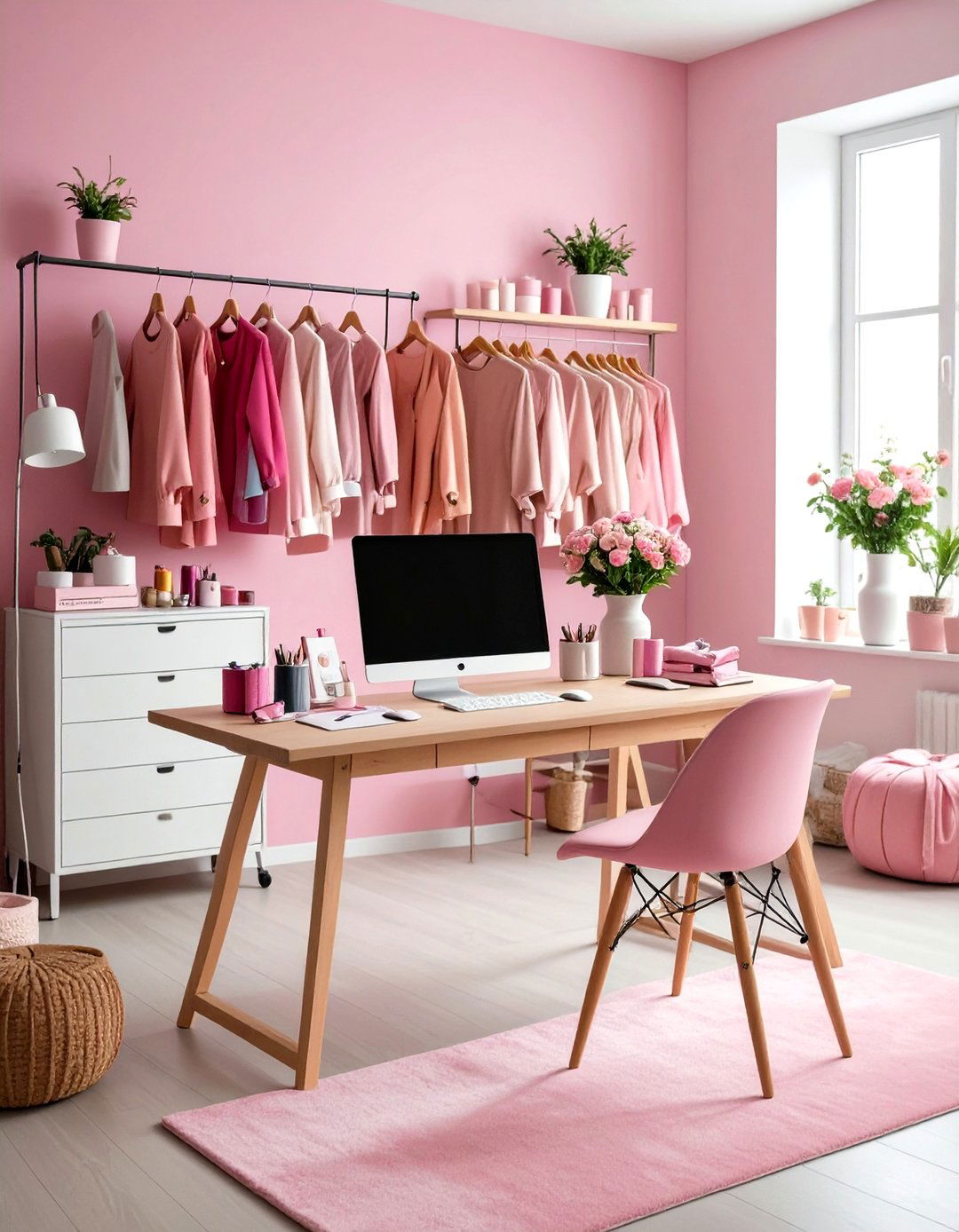
Incorporate charging stations and tablet mounts for digital patterns, tutorials, and virtual sewing communities. Install USB outlets in your cabinets or desk. A tablet stand near your machine ensures you can follow video lessons or livestream projects hands-free, blending traditional sewing with modern convenience.
18. Coordinated Color Schemes
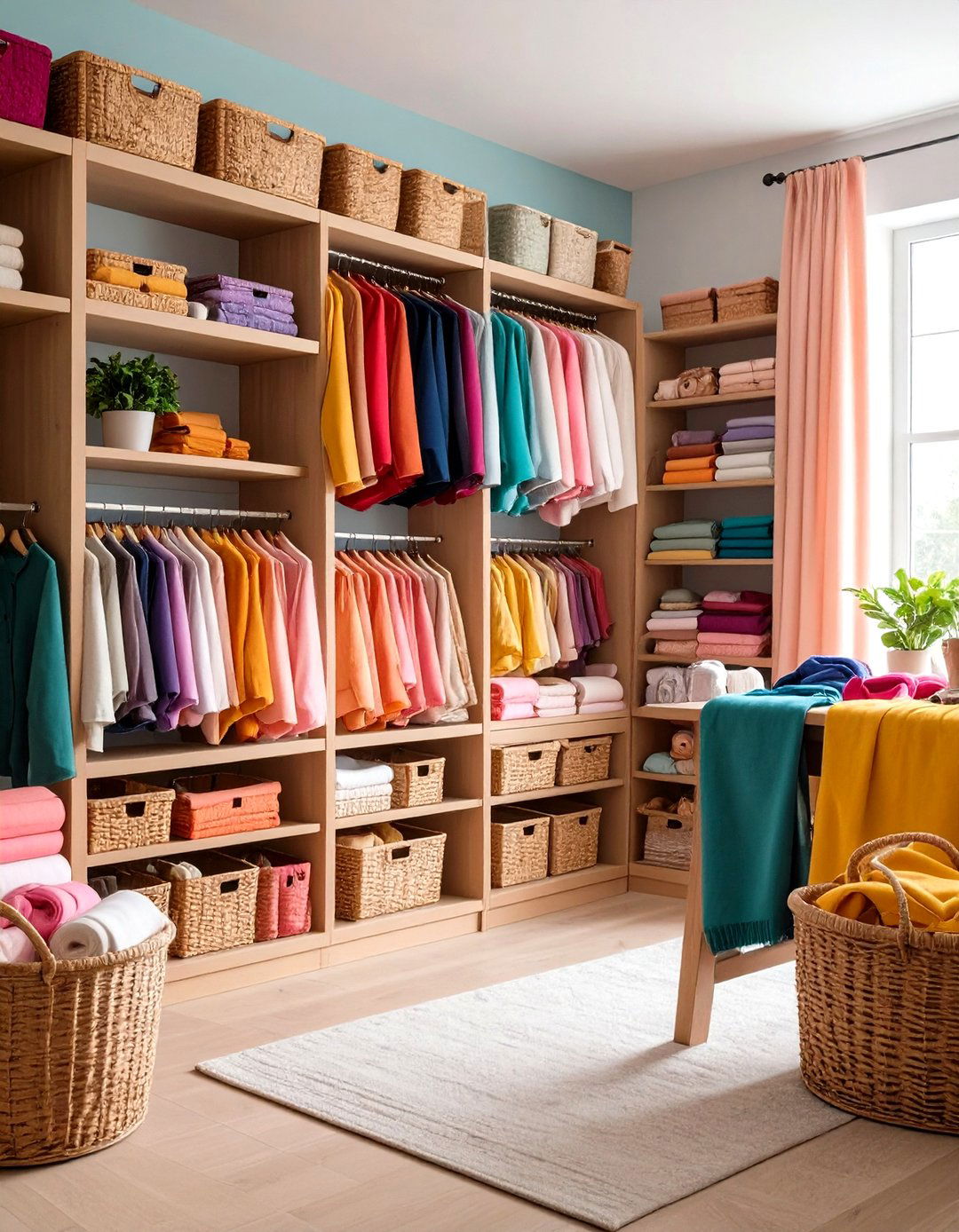
Unify your sewing room with a cohesive palette—whether bright and bold or soft and neutral. Paint cabinets and pegboards in accent colors that complement your fabric hues. Coordinated baskets, bins, and organizers reinforce the theme, creating a stylish environment that’s also inspiring.
19. Flexible Seating Solutions
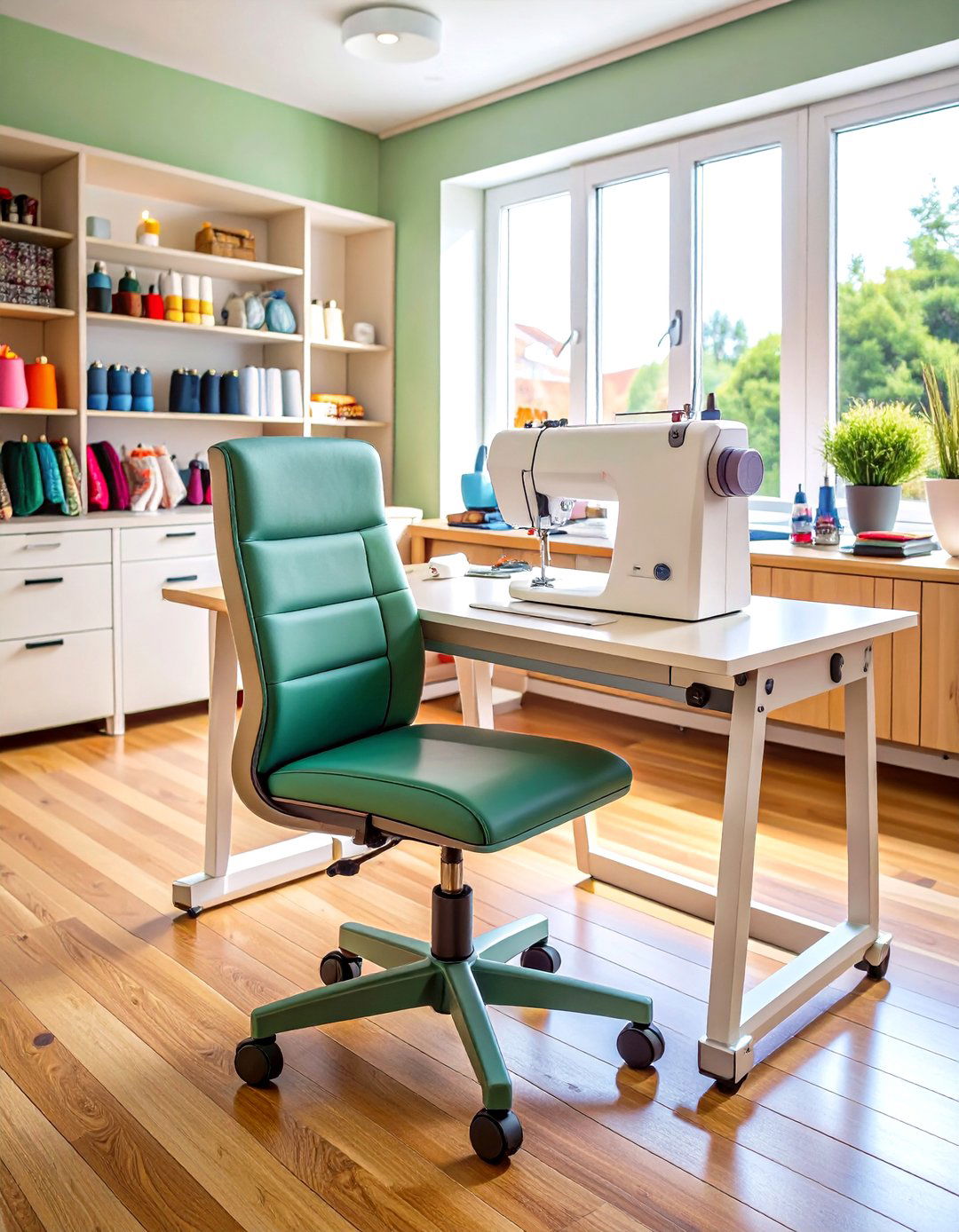
Choose adjustable stools or ergonomic chairs on casters to move freely between stations. A chair with lumbar support prevents back strain during long sew-a-thons. For group projects or classes, consider ottomans or small benches that can serve as extra seating when guests arrive.
20. Personalized Decor Accents
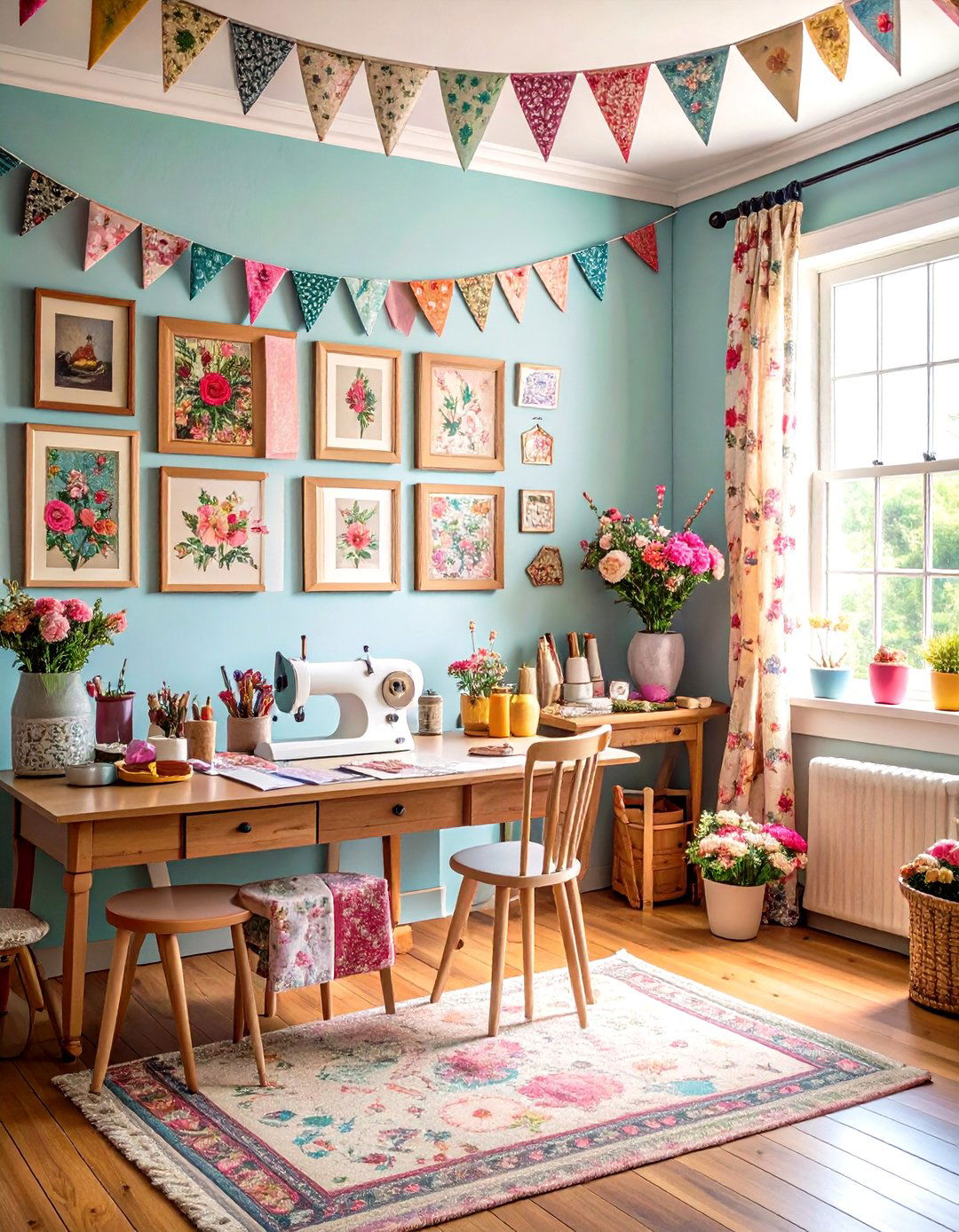
Add framed vintage sewing patterns, themed wall art, or a gallery of your finished projects to personalize the space. Decorative knobs on drawers, patterned pegboard frames, and thematic fabric bunting make the room uniquely yours. These touches not only beautify but also foster a sense of pride in your creative sanctuary.
Conclusion:
By combining thoughtful storage, ergonomic workstations, and personal touches, you can craft a sewing room that’s both beautiful and highly functional. From maximizing natural light and employing modular storage systems to integrating technology and showcasing your style, these 20 ideas offer versatile solutions for any space. Implementing even a few of these strategies will elevate your sewing experience, making every stitch, cut, and press more enjoyable and efficient.


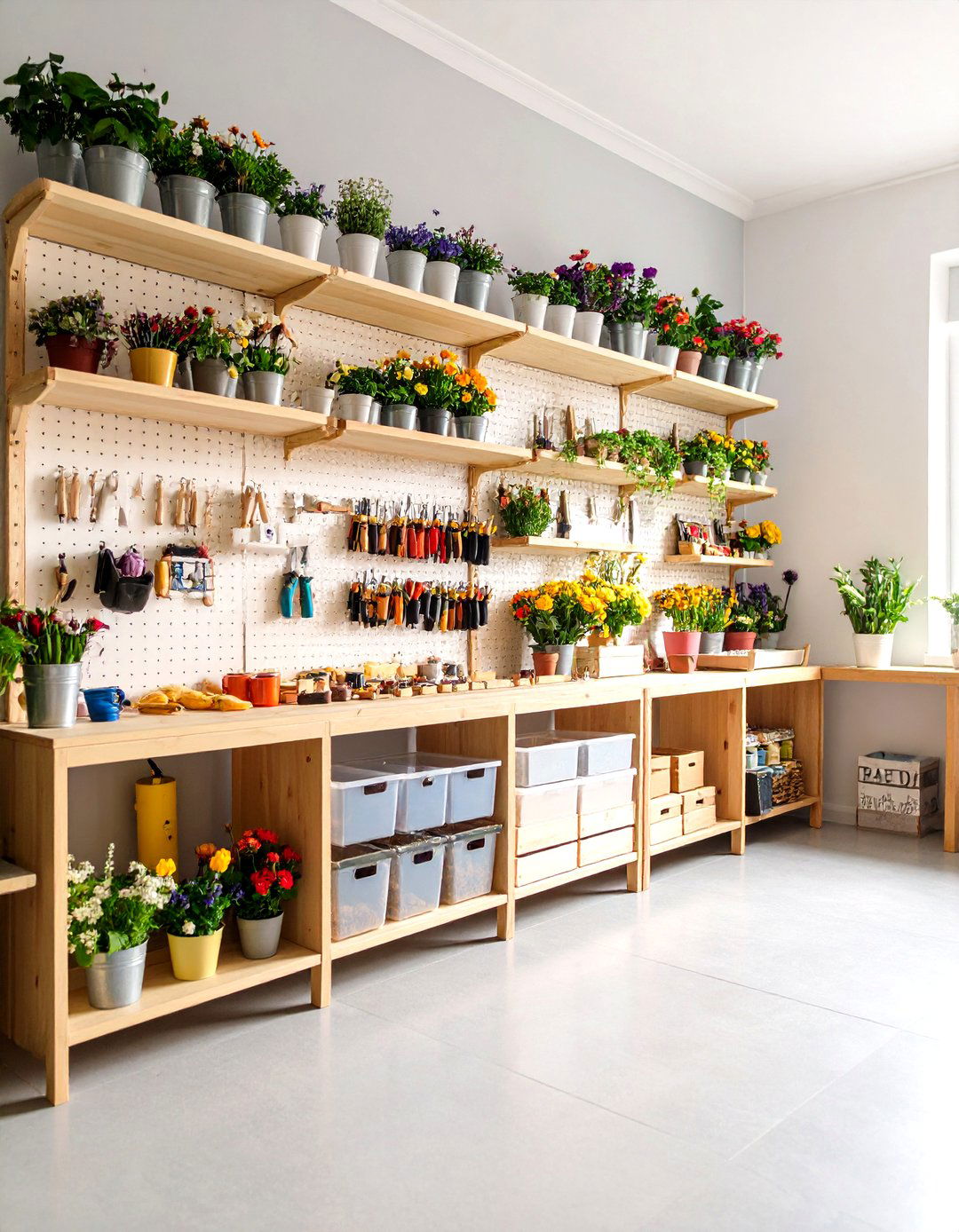



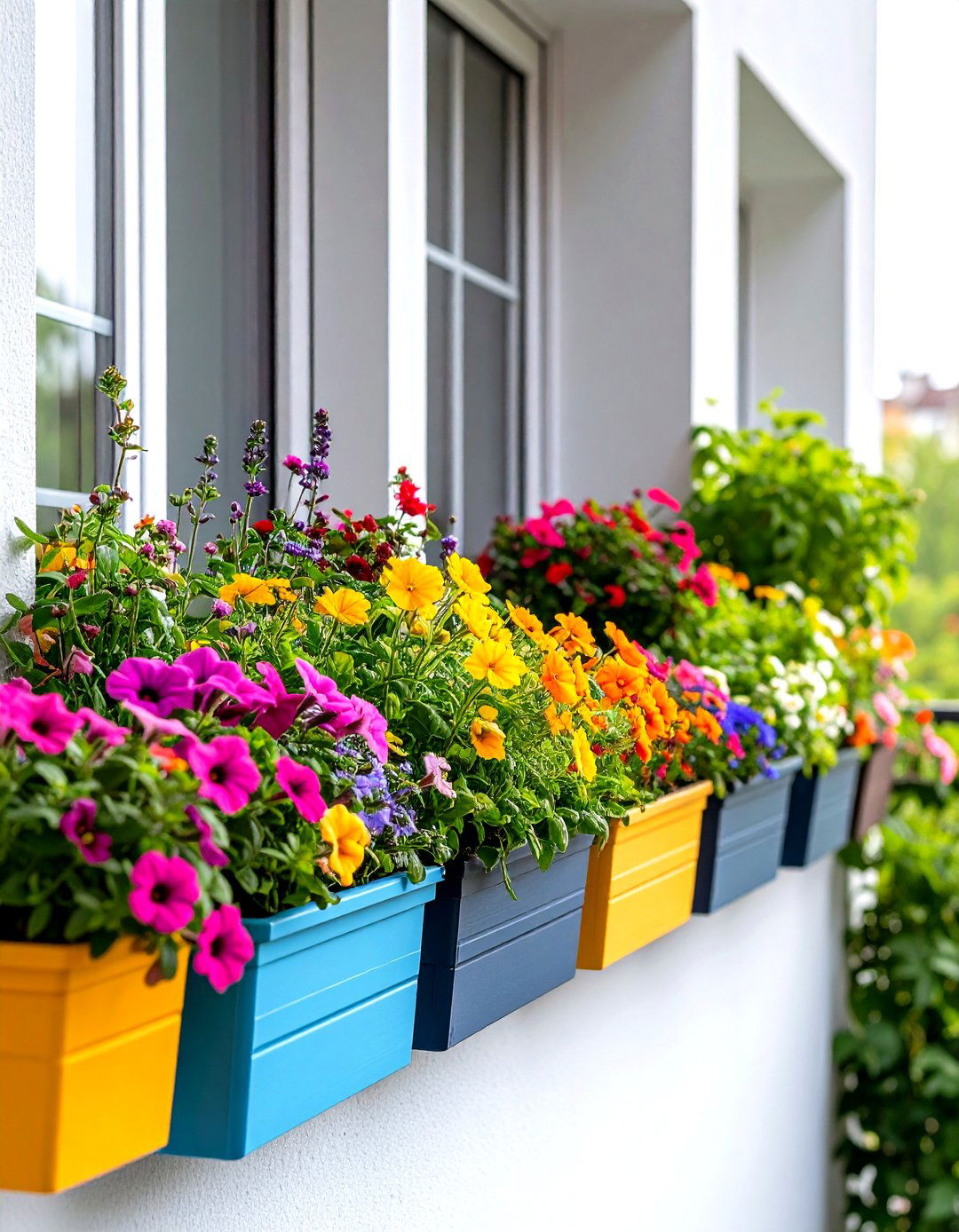
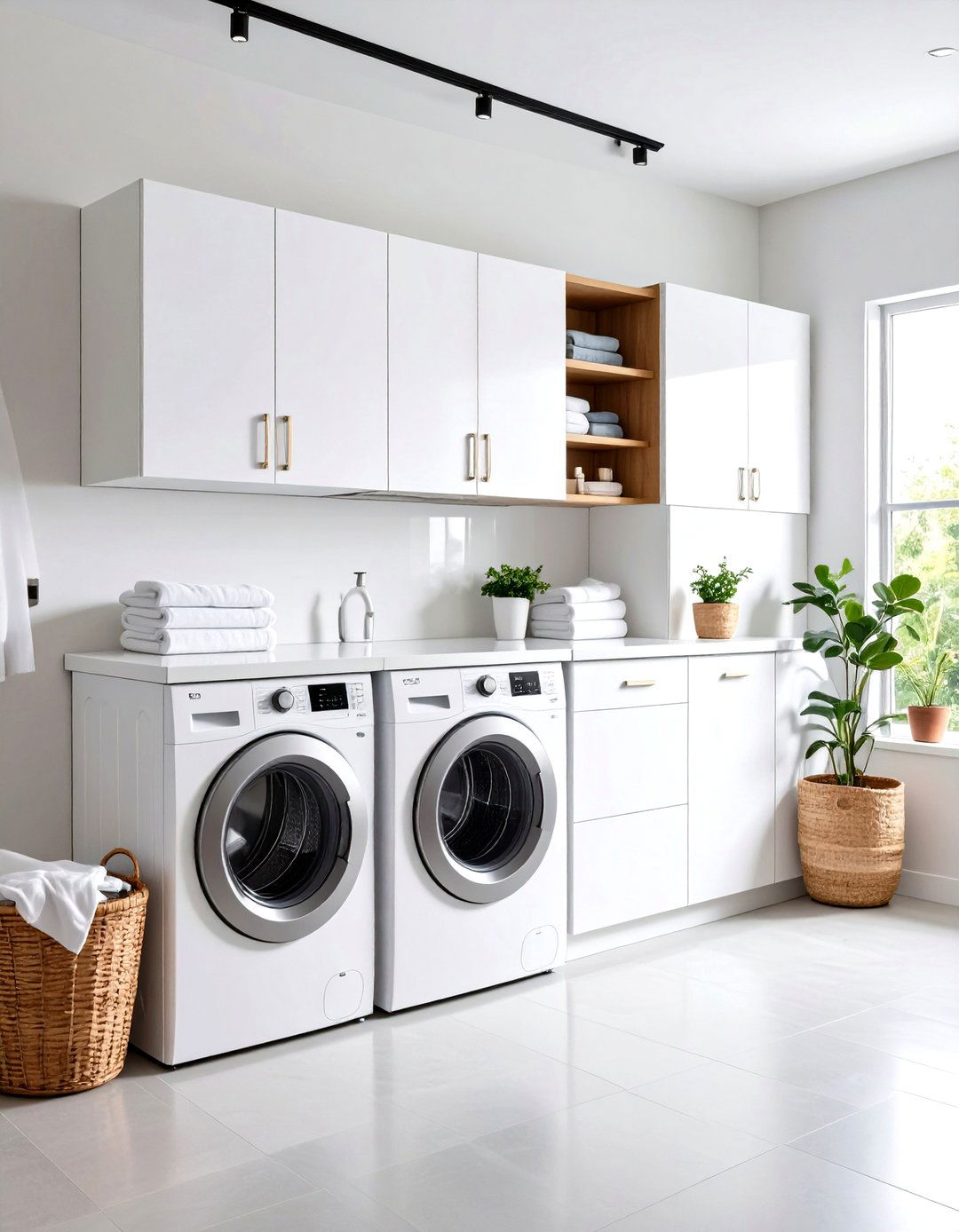
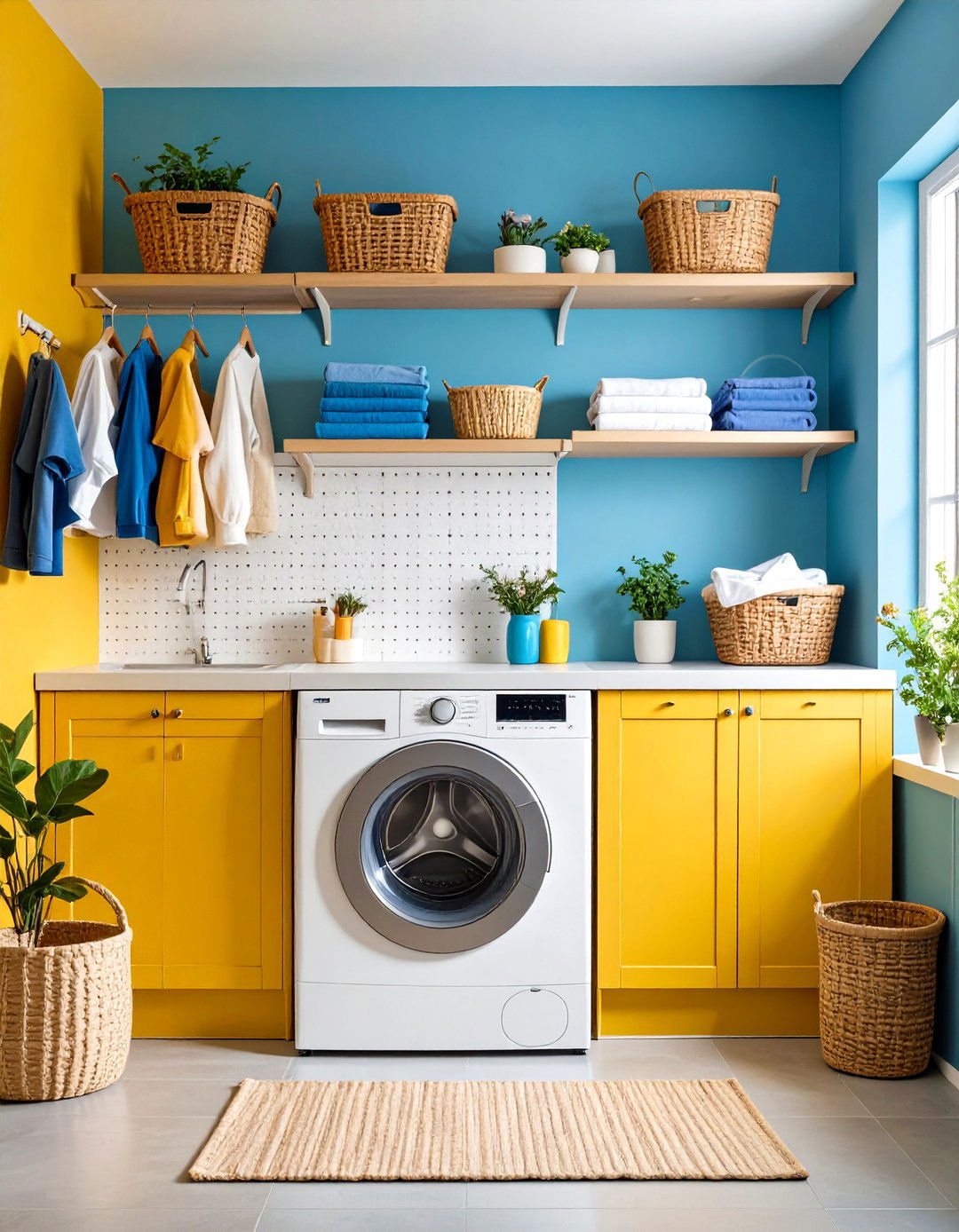
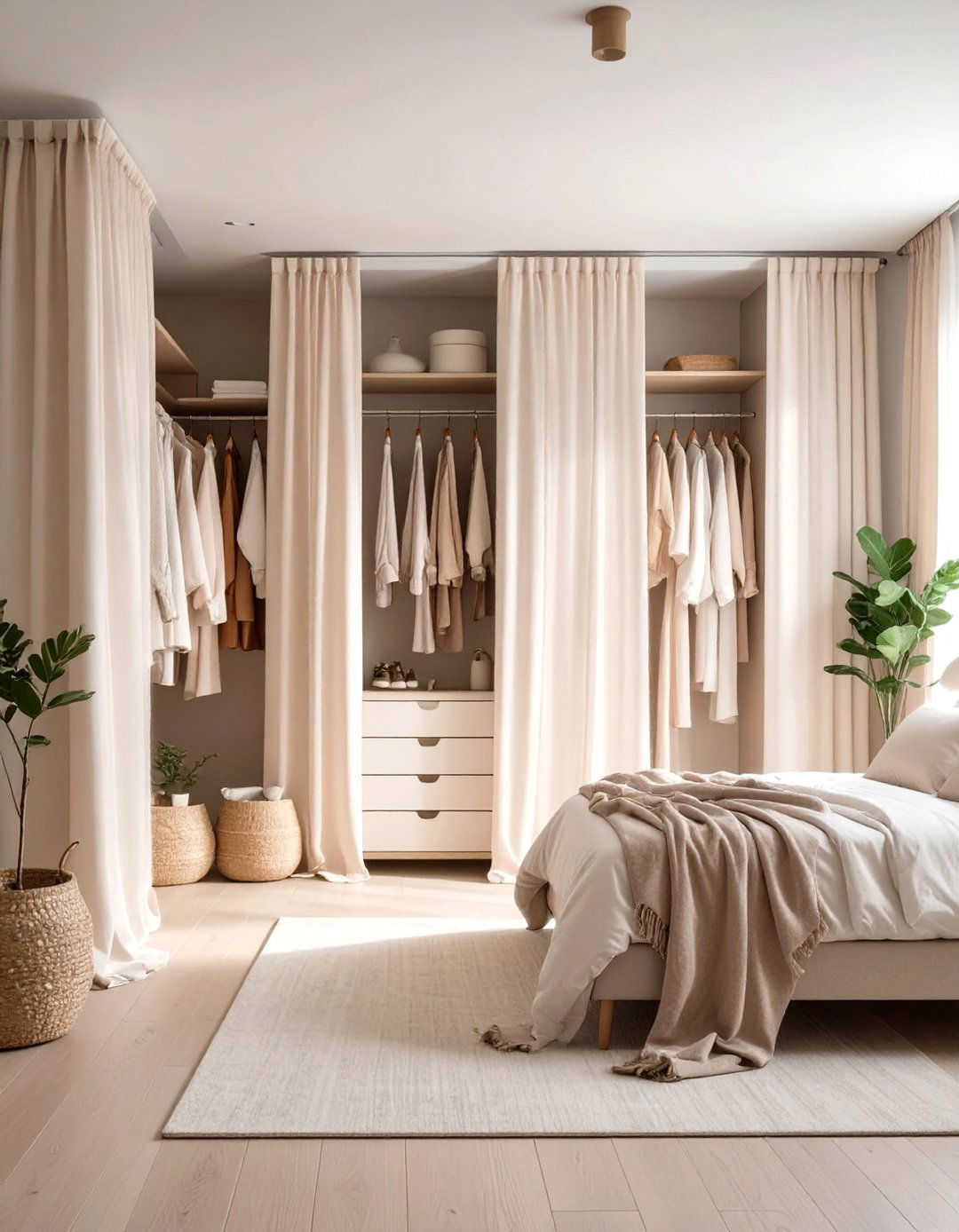

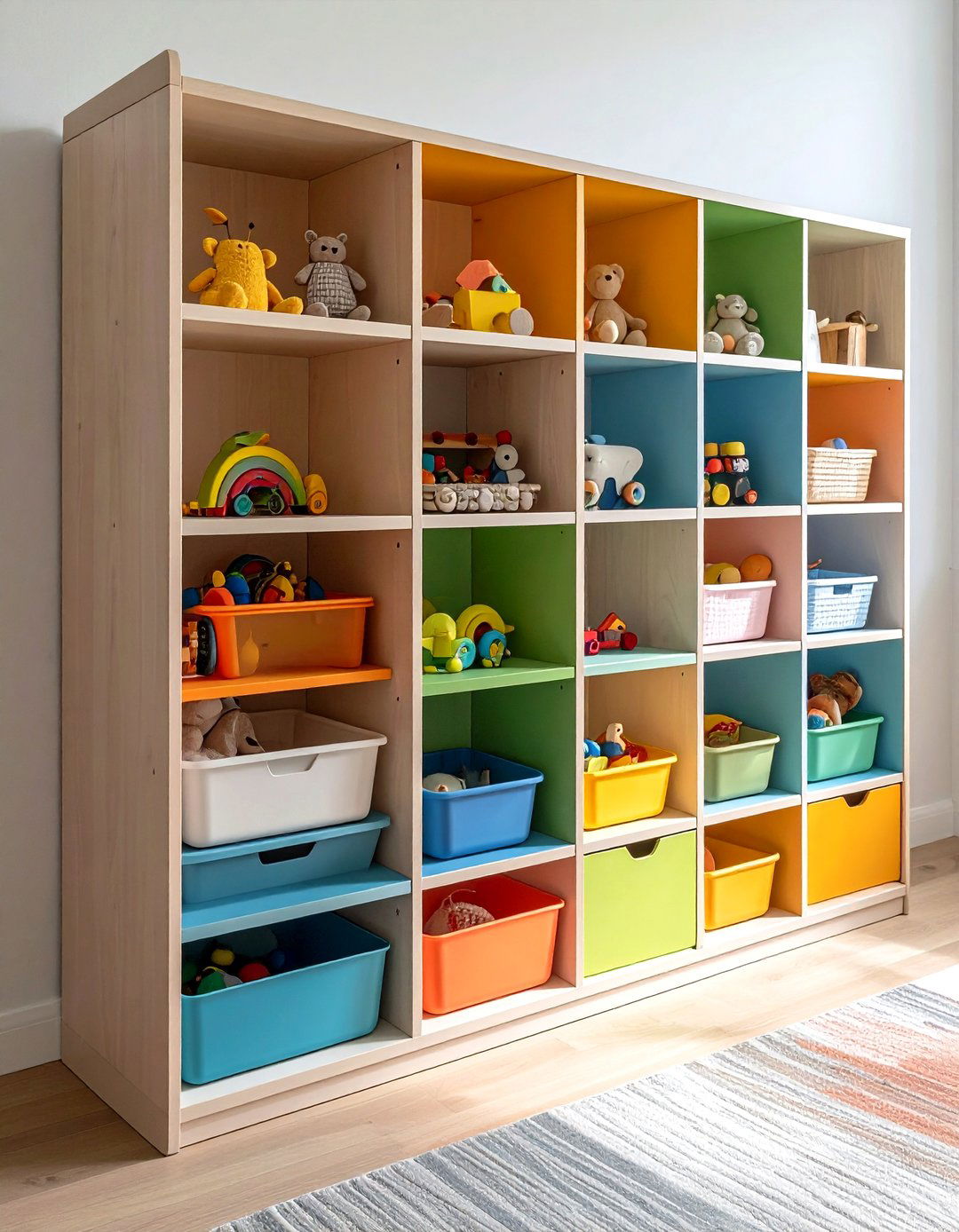
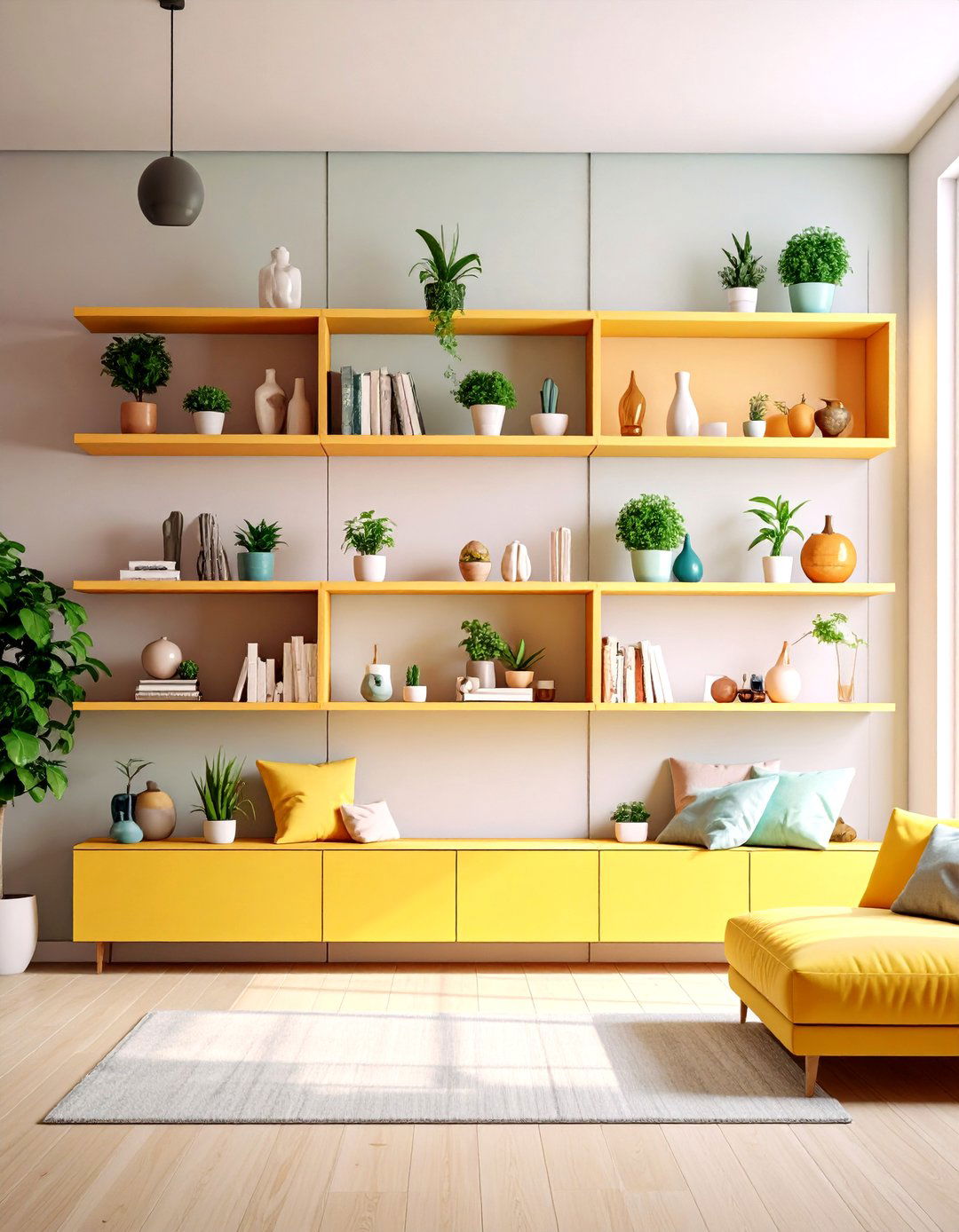
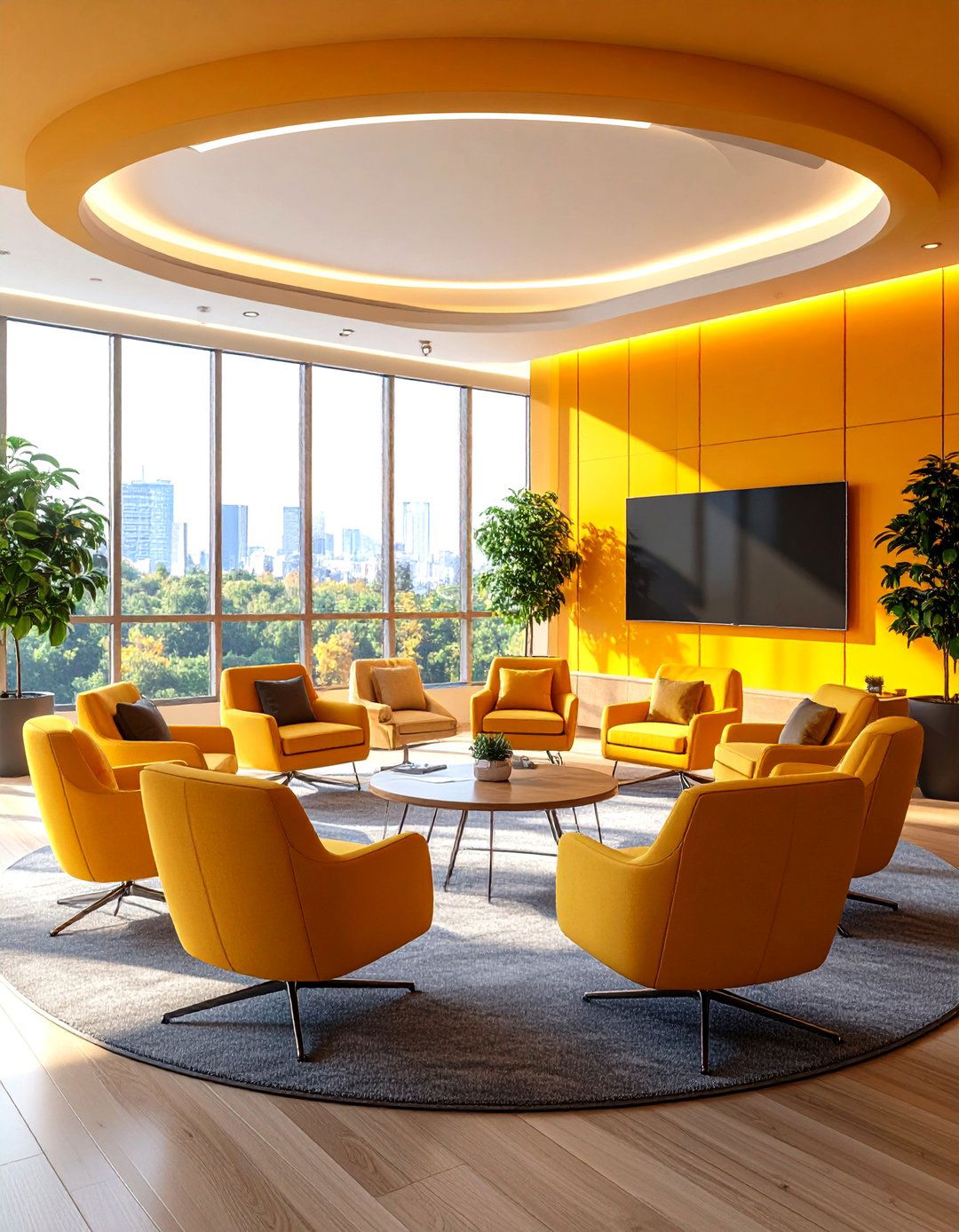
Leave a Reply